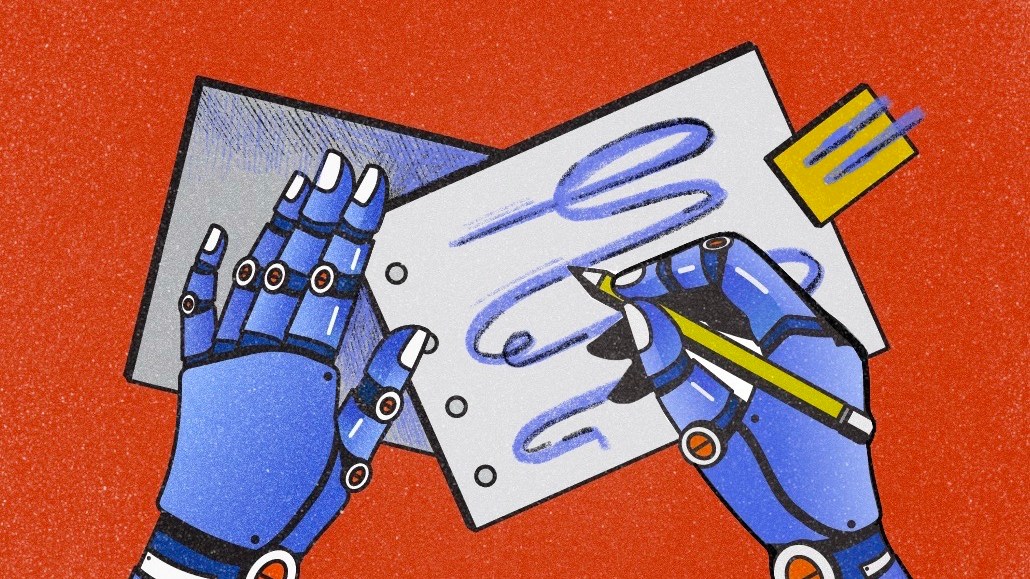Google’s new AI tools and OpenAI’s GPT-4 bring more ‘maturation’ to the AI race

The flurry of news related to artificial intelligence might soon require people to have their own AI to just keep up with — and make sense of — all the updates.
Both Google and OpenAI rolled out new updates to their AI offerings yesterday, with Google announcing new capabilities in the morning and OpenAI releasing its much-awaited GPT-4 only a few hours later.
With new APIs for developers and businesses, Google released new AI tools for generating text and images — and down the road also audio and video — along with new AI features for Gmail and Google Docs. There are also specific new tools for marketers in Google Cloud to perform brainstorming and copywriting tasks, as well as generate emails and creative assets.
Not long after, OpenAI revealed GPT-4, the company’s newest language model that can receive both text and image inputs. The company said it’s also 40% more likely than its predecessor to produce factual responses and 82% less likely to respond with “disallowed content” — both areas of ongoing concern.
Both Google and OpenAI declined requests for further comment, but their updates point to a further acceleration of a space that’s already moving at a dizzying pace. Despite Google’s new PaLM API arriving weeks after OpenAI opened its own APIs — which let developers integrate ChatGPT into third-party apps — some observers believe the giant is already catching up with its much smaller and younger rival.
Chirag Dekate, an analyst at Gartner, said Google’s updates also “raised the bar” by offering a way to separate customer data from model data — a key feature that protects users’ information. But in every case, he said it’s important to test out various tools since “it’s very, very easy to get lost in the noise.”
“Frankly speaking, beyond the headlines, the entities that will win out the AI race are the companies that successfully convert these technologies and make them digestible,” Dekate added.
Companies can also use GPT-4 to analyze even bigger data sets including up to 50 pages of text. The new model can also go beyond analyzing photos and also “read” diagrams and screenshots.
“Its potential abilities in text-to-image and video generation is huge,” said Pradeep Kumar, chief data officer at DDB North America in an email. “Translation, faster Q&A and overall advantages in scalability, productivity and creativity [is] something to look forward to.”
In the case of OpenAI’s updates, some companies are already building new tools with GPT-4.
The payments company Strips is using it to streamline users’ experience and combat fraud. Meanwhile, Morgan Stanley is using the model to organize its knowledge base, Khan Academy is using it to give every student a customized tutorand the government of Iceland is using it to preserve the country’s language.
Another early adopter is the language learning app Duolingo, which used GPT-4 to build tools for a new subscription version of the app called Duolingo Max. One feature explains answers to users and another lets them role-play using a language in various situations such as ordering a coffee from a barista in Paris.
To promote the new AI-assisted language tools, Duolingo is running an ad campaign on various digital platforms and also took out a print ad in The New York Times yesterday that didn’t specifically mention GPT-4. Klinton Bicknell, Duolingo’s head of AI, said GPT-4 is better than previous models and that DuoLingo is already exploring more ways to incorporate AI in the app. He added that they could potentially also use other companies’ language models in the future beyond OpenAI’s.
“It’s much better at having specific types of knowledge,” Bicknell said. “One of the core things about teaching language is that there is a lot of detailed knowledge about language you sometimes need to know about in order to explain to people. We found that GPT-4 can actually do a really good job of this in ways its predecessor could not.”
Another company with a new tool powered by GPT-4 is Intercom, a customer service automation platform, which yesterday released a customer service chatbot called Fin. According to Fergal Reid, Intercom’s director of machine learning, the latest model finally makes it possible to provide customer service with AI without as many issues around inaccurate information.
“It’s crossing the threshold where you can tell it what to do and it will behave predictably,” Reid said. “It’s becoming usable as a building block and becoming adoptable for businesses. There’s still a lot of work to shape it into a product, but if you do that work, you can end up with a great product.”
More in Media

Podcast companies turn to live events to capture growing advertiser spend
The surge in the number of live podcast events in 2025 reflects a broader shift: advertisers are betting bigger on podcasts — not just as an audio channel but as a full-fledged creator economy play.

Media Briefing: ‘Cloudflare is locking the door’: Publishers celebrate victory against AI bot crawlers
After years of miserably watching their content get ransacked for free by millions of unidentified AI bot crawlers, publishers were finally thrown a viable lifeline.

How Vogue could navigate potential industry headwinds as Anna Wintour — who agency execs say made ad dollars flow — brings on new edit lead
Anna Wintour’s successor at Vogue will have to overcome the myriad of challenges facing fashion media and the digital publishing ecosystem.








